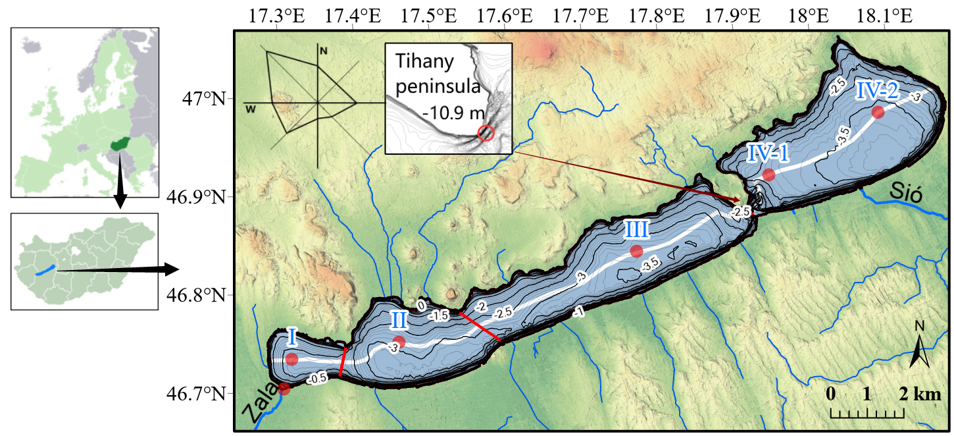Lake Balaton temperature rises by nearly 2°C since 2000
Satellite images and local measurements show that Lake Balaton's average temperature has increased by 0.7°C per decade over the last 20 years. A study by the HUN-REN Balaton Limnological Research Institute (BLRI) found that the western part of the lake warms primarily in spring and summer, while the eastern part tends to warm in autumn and winter. Researchers anticipate a similar warming trend in the coming decades, intensified by ongoing development around the lake.
Shallow lakes, such as Lake Balaton, are particularly vulnerable to climate change because they warm up and cool down faster than deeper lakes, and their water balance is more sensitive. Due to higher temperatures, shallow lakes experience increased evaporation, which can lead to a drop in water levels, making Lake Balaton more susceptible to temperature fluctuations.
Researchers at the HUN-REN Balaton Limnological Research Institute used archived satellite data and local measurements to investigate changes in Lake Balaton's surface water temperature over the past 20 years. They found that the lake's average temperature has increased by 0.7°C per decade, with the largest rise occurring in the shallow western Keszthely Basin, where temperatures climbed by 1.8°C between 2000 and 2024. The study also revealed that the shallow western part of the lake warms primarily in spring and summer, while the deeper eastern part tends to warm in autumn and winter, explained Boglárka Somogyi, senior research fellow and leader of the Aquatic Botany and Microbial Ecology Research Group.

Li Huan, the lead author of the study, said that there are no precise figures on how much Lake Balaton's average temperature might increase in 10 or 20 years. However, she added that they have already started work on a longer, multi-decade follow-up study to make more accurate predictions. "Our preliminary work suggests that if climate change does not abate, we can expect continued warming, with water temperatures likely to rise by 0.5 to 0.7°C per decade over the next 10 to 20 years," she said.
According to Li Huan, while the growing size and number of marinas around Lake Balaton do not directly affect water temperatures, the urban areas surrounding the lake—where two-thirds of the shoreline is urbanised—will contribute to warming the lake. This is supported by their latest research, which also highlights that human activities, such as urbanisation and land reclamation, may further increase temperatures. They add that understanding detailed temperature changes can help develop more effective environmental, water management, and tourism strategies for Lake Balaton.

Milder winters and warmer summers, which have become more common at Lake Balaton in recent years, can create favourable conditions for non-native species, such as certain subtropical and tropical algae, fish, and plants, enabling them to compete with native species. If the indigenous species, accustomed to cooler conditions, cannot adapt quickly enough to the changing climate, they could face extinction.
"Although native species can adapt to some extent, the rate of environmental change may exceed their ability to do so. This could lead to significant changes in the structure and functioning of Lake Balaton's ecosystem, potentially allowing more resilient non-native species to dominate," stressed Viktor Tóth, senior research fellow.

